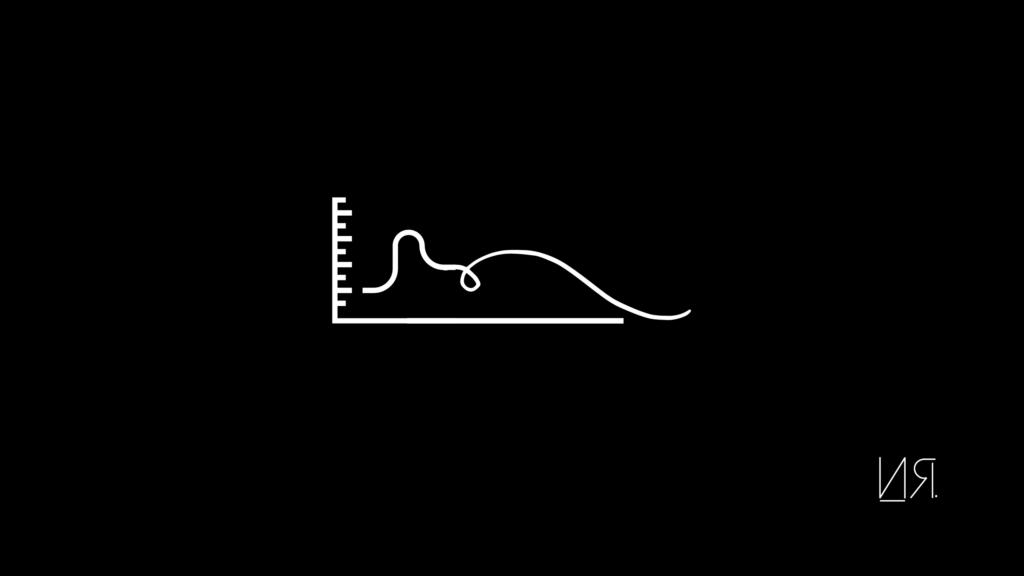Have you started a project that you were very passionate about just to abandon it a few weeks later?
You got very excited about the idea.
Told friends about it.
You came up with the initial structure.
Envisioned your end goal vividly.
It was all clear in your mind.
You purchased and set up everything you thought was needed — a journal, sketchbook. You even got a few of your friends to buy-in on your vision.
A few weeks later, the excitement wore off and you stared at maybe 5% progress.
You spent a few days trying to motivate yourself but you had lost momentum to continue.
THEN…..A new idea came up!!!!
Ding. Ding. Ding.
You got excited again, abandoning the last project, just to lose momentum again, down the line, and abandon the new project.
Does this sound familiar?
The Enthusiasm Trap
We tend to fall in love with our ideas.
We fall for the biggest scam that our internal resistance will use against us: enthusiasm.
Creative resistance loooooves enthusiasm.
Only the pros know the long road ahead. The amateur, however, will fall for this trap.
One new idea after the other.
You might have heard this before:
“I’m just good at ideas”
“I didn’t put in any equity, or contribution, I’m the idea guy” (no one is short of ideas, fam)
“I have this great idea for you, I just don’t have time to focus on it” (oh lord, the worst)
Ideas are easy.
Execution is hard.
It’s easier to have a perfect idea in your mind than to be humbled by the mediocrity of an idea executed.
A mediocre idea fully executed is 1000 times better than a perfect idea stuck in your mind.
Execution is where the story is at.
The amateur will never make it out of the valley of the project plateau, where good ideas die.
You have to be aware of the project plateau and maintain your energy line to see it all the way through.
Centuries of great ideas are in the den of the dark valley called the project plateau.
4 Ways To Consistently Ship Your Projects
Show don’t tell.
That’s what the pros do.
They show people the manifestation of the idea. They “roll in silence” like The Notorious BIG and let their work speak for them.
They understand the steps it takes to commit to completion. Everyone can do the same.
By learning about the full project timeline and the inevitable project plateau, you will be equipped with the tools to bring your ideas to full fruition.
You’ll build real confidence by shipping your ideas instead of talking about it.
Here are 4 ways to get there.
1. Understand the project plateau
There was something that drove you to start it in the first place.
There’s a reason you were initially excited about it.
You just continue to hit the “project plateau” – the deadly den of dead ideas.
The project plateau is the stage in every project that you lose interest in your ideas.
That’s when the reality sets in about how much it will take to bring your vision to fruition.
I learned about this concept from author and entrepreneur, Scott Belsky in his book, Making Ideas Happen.
Understanding this project plateau before starting a project is important, so that you can anticipate the dip, maintain your energy line, and keep the momentum.
One of the most crucial aspects of making it through this project plateau is a system that keeps you afloat during those down time.
It has to do with organization and action.
2. Use the action method
Ideas are made to happen only with a well managed workflow.
When I was at Stanford, I used to visit its world-renowned design school.
There I met a lot of aspiring entrepreneurs, designers, students learning different things from music to symbolic systems.
All mixed in this design pot to create.
One of the main things I learned from design thinking was biasing towards actions.
Taking action was the default.
Every idea is associated with a project.
Everything in life is a project that can be broken down into its basic elements:
- action steps
- references
- and back burners
This is the action method.
Action steps are the things that move you towards the completion of your project. They are actionable and should be in the forefront of your project.
A little thing to do to make sure a task is actionable is to start with a verb.
Verbs pull us into the action.
“Call the designer for update on Logo”
“Write draft of sales page”
“Send 10 DMs to set a reminder for your event”
Back burners come to you as ideas. They can happen while you are driving or in the shower.
They might not be actionable at the moment for your current projects but maybe in the future.
Put them in a back burner folder.
Make it a ritual to visit your back burner and do a review (perhaps monthly).
The last of the three is reference notes. These are notes, articles, pictures, videos, podcasts that can be useful to the project but once again not actionable.
In this case it is important that you label your references in ways they can be intuitively recalled – by project name, chronological order, or whatever works for you.
Always ask, “why is this reference useful?”
If you can’t answer that question clearly, don’t keep it – it only adds to clutter.
Take the time to develop a system that is easy to get to so that you can process the information in one single location.
A digital note-taking app or folders on your computer can do this. If needed, you can use an actual physical folder.
Having this system ahead of time helps us avoid what most of us in this digital era suffer from: a “reactionary workflow”
Where we don’t know how to process what comes at us, so we tend to rush to what’s urgent and forget what’s important.
Break your projects into its basic three elements. Focus on having clear action steps to move forward.
3. Prioritize & execute
You are just one priority away from making your idea happen
“we should send this out but we just need to polish it some more”
“what should we work on now? Oh wait, someone just sent me an email”
Have you heard of any of these?
Maybe it’s from a friend.
Maybe it’s from your head.
Perhaps you read it on Linkedin.
Perhaps you read it on threads.
These are just one of the many things we do that stop us from executing our projects.
We only have a limited amount of time, attention, and energy.
We can only focus on one action step at once. We have to compartmentalize and have clarity on what to do.
Put project tasks across an energy line that starts at “extreme” and goes all the way down to “idle”.
The grid can be used to answer the question: “How much energy should your current project task receive?”
Avoid the tendency to escape the lulls of the project plateau.
You have to learn to act without conviction – working without having all the information ahead of time.
It’s not all about generating ideas. A big part of the process is shutting down ideas and saying no.
Grab your idea-slashing samurai sword.
SLASH! Kill ideas liberally that are not crossing things off your action step list.
Or put them in the back burner folder.
Stay focused.
The creative pro identifies as “a shipper”
Someone who gets their projects shipped.
The psychology of completion is very interesting. It’s when you are about to ship that your lizard brain kicks in.
Your fear of rejection becomes top of the line.
“Oh no, people are going to laugh at me.”
Oh please, wipe your crocodile tears.
No one really cares.
Most of your friends are too busy thinking about themselves.
Ship that thing for yourself: do it for the promise you made to yourself to follow through.
You want the comfort of social inclusion when what you need is a quieter lizard brain.
Lastly, avoid “insecurity work.”
This is where we run back to when we do not want to ship.
We go back and dwell on:
“more data”
“more analysis”
“more planning”
Insecurity work is what you do that doesn’t move the ball forward but gives you the illusion of movement.
Recognize it by always asking: “how is this moving me forward towards my completion?”
Overcome overthinking and procrastination by conserving your energy during the project plateau and prioritizing your action steps.
4. Leverage community
No one is an island.
Your community will take your ideas farther than you would on your own.
I know a few people that start whispering when they want to talk about their new idea.
They look around the room to make sure the corporate espionage agent is not sipping coffee on the next table ready to steal their perfect idea.
A little push back, they hold the idea close to their chest instead of leveraging the power of the networked-mind.
Are you a dreamer, doer, or incrementalist (polymath)? Know the one you are and find a complementary partner or team.
The dreamer has millions of ideas but cannot open an excel file or a planner to save their life.
The doer is always heads down executing but has no way to think about the bigger picture.
The incrementalist can do both – dream and do. You would think this is ideal. It depends on what you want to achieve.
The challenge with the incrementalist is that their impact will remain local. This is fine if that’s what you want.
They are the genius local artists in your town.
Although their work could impact a bigger audience, they are too busy dreaming and doing – chipping away at their new craft alone.
They can go further with assistance.
Everyone is unique and has a different set of expertise and experience. Community provides support, accountability, and complementary skill sets.
Here are a few things to keep in mind as you think about leveraging your community to complete your projects.
- Share ideas freely: The idea is just a very small step in the entire process. Teams and society benefit from shared ideas.
Sharing ideas early provides momentum, sharpens the idea, and builds a community willing to support the idea to its full fruition. - Ask for feedback: Your community is the first layer of your circle to give initial feedback on your project.
- Develop systems of accountability: Leverage circles for accountability but keep these circles smaller than 15 people.
- Seek competition: Don’t shy away from it. The pro knows they are in the arena. Competition keeps you fired up to move forward.
- Commit to your idea: Until you fully commit to your idea, that’s when your community will put their resources and reputation on the line for you.
- Seek stimulation from serendipity: by working among fields of varied expertise because unexpected solutions emerge from the spontaneous intersection and exchange of ideas.
Also take advantage of mistakes – for the chance of discovery of where the new path may lead to. You are human after all.
Knowing yourself is one of the most important things to learn in life.
The more you know who you are, the better you will get at identifying the type of help you need.
Final thoughts
Organization is what you need to fully unleash your creativity.
It is “structure” that will get your idea to project completion.
Start by understanding the full scale of a project. Understand the project plateau and set up a system to help you coast through it.
Use the action method to organize projects into its three important elements. Focus on action steps that move you towards completion.
Develop an active workflow that helps you spot the important over the urgent and leverage the power of accountability to consistently ship your work.
Go develop your organization method.



